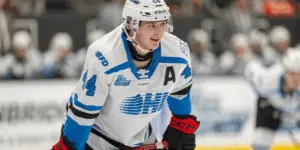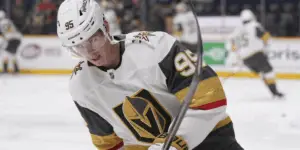
In the not-too-distant past, the Anaheim Ducks were perennial playoff contenders. Between their Stanley Cup win in the 2006-07 season and their final playoff appearance in 2017-18, they reached the playoffs 10 out of those 11 years, including 2 Western Conference Final appearances in 2014-15 and 2016-17, and 5 straight Pacific Division Titles between 2012-13 and 2016-17 seasons. This era of Ducks hockey is without question not only the best team the organization has ever put on the ice but is inarguably one of the best in the entire NHL through this period. So what happened? How did a team with so much prolonged success fall so hard out of contention? While the future is bright, I think it’s essential to look at how they got here and ask some questions about how they can get out.
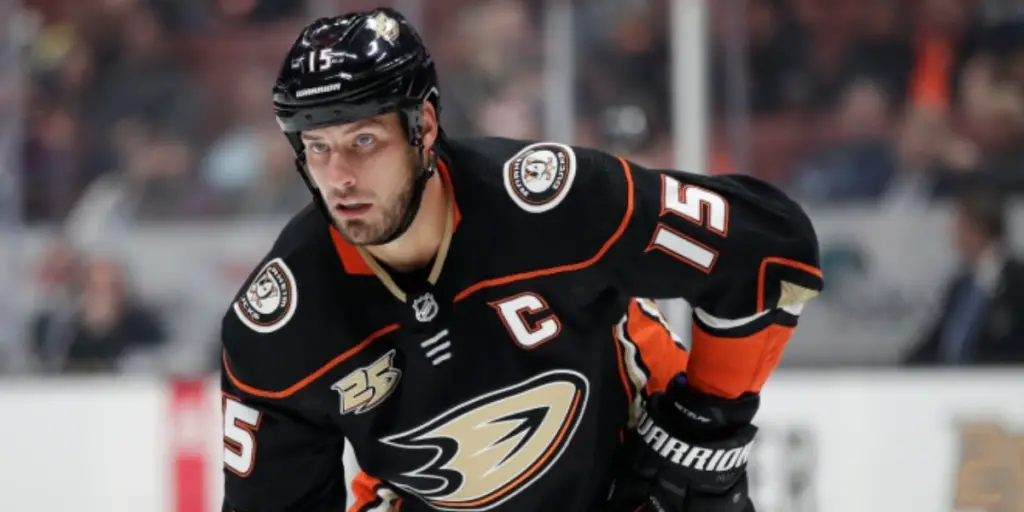
If I Were A Betting Man
All teams go through rebuilds. It’s part of the sports business strategy, both by teams and by their respective leagues. You build and develop, leverage homegrown assets to bring in outside complementary pieces, and then contend. You contend for as long as you can. Eventually, your core ages out, you fall out of contention, and the process starts over again. Prolonged success is the exception, not the rule. Between the draft lottery and the hard cap, the modern NHL is designed to ensure every team gets their day in the sun. When you stray from this life cycle, things can go wrong, and in recent years, the NHL has been littered with teams that gambled on extending their contention windows and are paying a heavy price. Extending success usually means you’re holding onto more expensive players, which decreases roster flexibility and often denies developing prospects of valuable experience. It also means picking lower in the draft order year after year. This is a gamble that your team will continue to be successful in that time because when the contention window finally closes, it slams shut. That is where the Ducks have been the last four seasons. The previous regime gambled a lot, and it never paid off.
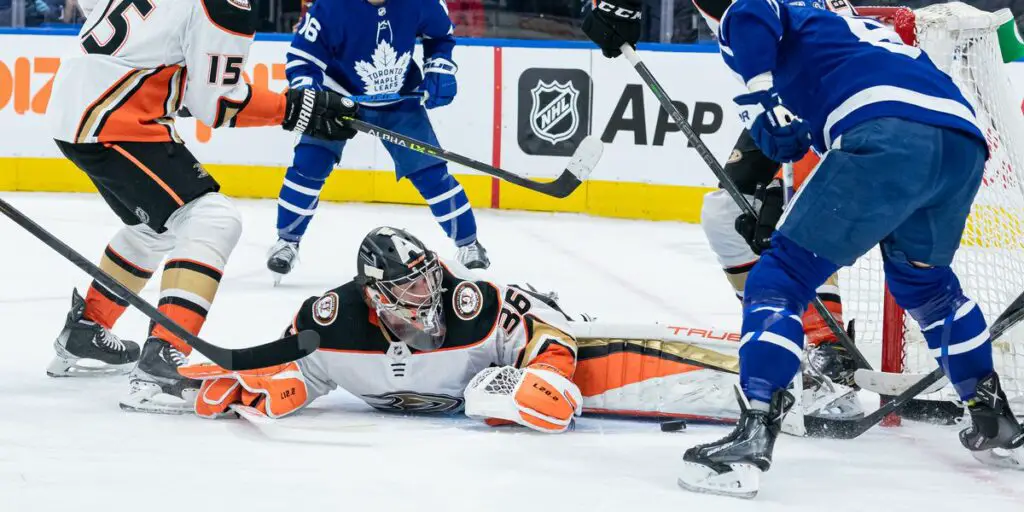
Big Contracts, Moving Prospects, And An Ageing Core.
The Anaheim Ducks are NHL Draft Legends by all accounts, and the helm of this operation, Martin Madden, is thought of fondly throughout the league. You can’t kick a rock without finding a career NHLer that the Ducks drafted and developed. The problem is, a lot of them aren’t on the Ducks. Shea Theodore was shipped to Vegas in exchange for them picking up Clayton Stoner’s contract. Brandon Montour was traded to Buffalo in a prospect swap. William Karlsson, Marcus Petterson, Frederik Andersen, Kyle Palmieri, and Justin Schultz have all found success after the Ducks. Some of these were to make room for other players’ contracts, some just never thrived in the Anaheim system, and some were simply going with one player over the other.
And then there are the contracts. Clayton Stoner at 3.25 million over four years. Ryan Kesler at 6.8 million over six years. Patrick Eaves at 3.1 million over three years. John Gibson 6.4 million over eight years. Cam Fowler 6.5 million over eight years. Clayton Stoner, Ryan Kesler, and Patrick Eaves never played out their contracts. John Gibson is one of the highest-paid Goalies in the league and hasn’t played like one in years, and Cam Fowler is good, even putting up career-high numbers, but isn’t a 6.5 million dollar defenseman. This eagerness to pay players in their late 20s and early 30s copious amounts of money with term attached was, and still is, a detriment. And when you combine this with a willingness to trade away prospects, you end up with a dry well and little flexibility.
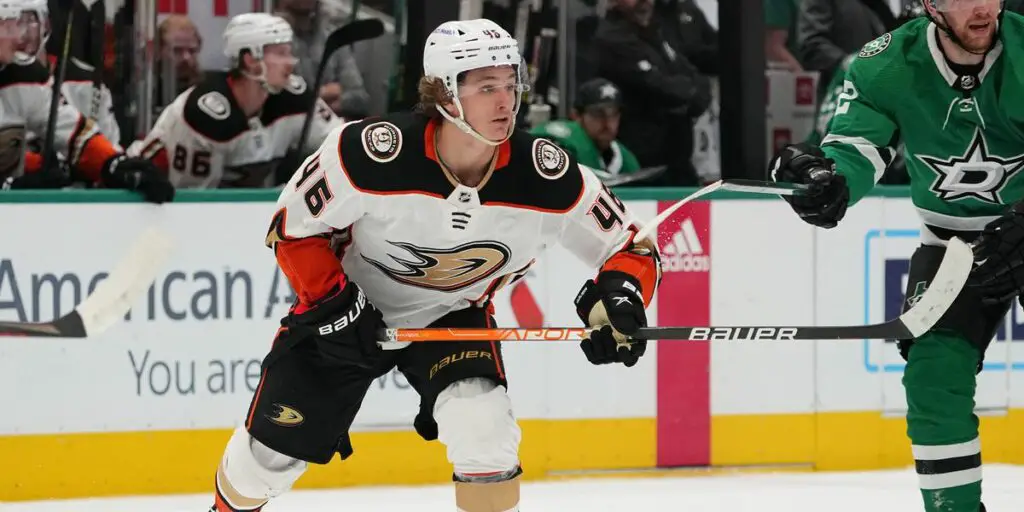
A New Era
With the aforementioned roster management, it put a lot of pressure on prospects and the development teams to deliver. This never really happened. A lot of flaunted prospects from this time never materialized much individual success. Rickard Rakell, Hampus Lindholm, John Gibson, and Josh Manson were all core members and contributors to the tail end of that era’s success, but when the veterans bottomed out, they struggled to carry that weight on their own. The wave after them, Maxime Comtois, Sam Steel, Max Jones, and Troy Terry all struggled from the start, with only Troy Terry becoming a bona fide NHLer. Max Jones has succeeded in a limited role, and Maxime Comtois and Sam Steel are no longer on the team. Steel is already bouncing around the league, and Comtois is still unsigned after not receiving a qualifying offer.
The Ducks would be forced the rebuild whether they wanted to or not. They started restocking the cupboard with the likes of Trevor Zegras, Mason McTavish, Jamie Drysdale, and Olen Zellweger through the ensuing drafts of 2019-2021. The start of the 2021-22 campaign saw a lot of unexpected success. Then in November of 2021, longtime General Manager Bob Murray would be placed on leave and eventually resign following an internal investigation of misconduct. In February of the next year, they would hire the current General Manager, Pat Verbeek. Verbeek wasted no time clearing house – Rakell to Pittsburgh, Lindholm to Boston, Manson to Colorado. The season would end their season 8th in their division. Pat Verbeek sent a clear message – this was going to be a full rebuild.
In the following 2022-23 season, very little was done regarding upgrading the roster, especially on the blue line, which would lead to not only the worst team in Ducks history (which is saying a lot considering they are a 90’s expansion franchise) but one the worst teams statistically in the modern era. I do not think it is debatable that this team was not built to win, but I think it’s safe to say that it being as bad as it was, was not the intention either. Questionable coaching, lack of player leadership, and poor on-ice chemistry became obvious concerns as the season dragged on. With the 2023 Draft being flaunted as one of the best ever, it became clear there was no intention of correcting or attempting to fix the situation. The Ducks would finish dead last in the league.
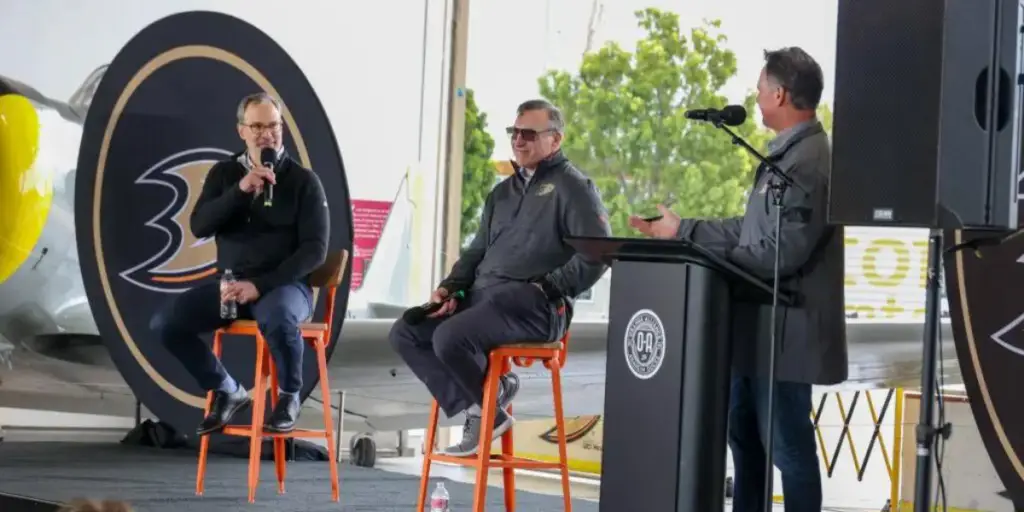
More Questions Than Answers
No doubt that there is a complete and intentional rebuild ongoing in Anaheim. The questions going on into the off-season were primarily focused on contracts for the core, who they’d draft, and who’d they sign. Now a little way out from training camp, and just over two months from the first puck drop off the 2023-24 season, everything that seemed obvious was apparently not. Jamie Drysdale, Troy Terry, and Trevor Zegras received Qualifying offers, none of them are signed to new deals, and Terry filed for arbitration, with a date set for 8/4. The Ducks selected Leo Carlsson ahead of Adam Fantilli with a clear direction in mind. Adam Fantilli is a ready-made NHL player. Leo Carlsson has a higher ceiling but still needs development. It sends a clear message by prioritizing the second overall pick and not signing the current core as a priority. This rebuild is not winding down; it’s ramping up.
With the team being as bad as it was last year, it’s clear a lot of work needs to be done. I know a lot of people are hopeful about moving forward, and surely they will not repeat the struggles of last season, but I think it’s time we start thinking about how deep this rebuild can go. The issue with the current core of young players is that they can’t be assessed in a vacuum. The team as a whole was bad, and while Trevor Zegras’ and Troy Terry’s offensive games were some of the lone bright spots last season, they both struggled in their overall game. Troy Terry’s production took a step back, finishing the year with 23 Goals, 38 Assists for 61 Points, and a -8 Goal Differential. Trevor Zegras maintained, or in some aspects got worse, finishing the year with 23 Goals, 42 Assists for 65 Points, and a whopping -24 Goal Differential. These are not numbers you extend $7+ million dollar contracts for. Their individual performances were undoubtedly hampered by the team they were surrounded with, and it’s not to say they aren’t players that deserve big paydays, but making a clear-cut decision without knowing what role the team had to play versus the individual is not a smart move. At the end of the day, Pat Verbeek drawing this process out and likely bringing it into the next season may not be the popular thing to do, but it is the smart thing to do and something the previous General Manager would not have done.
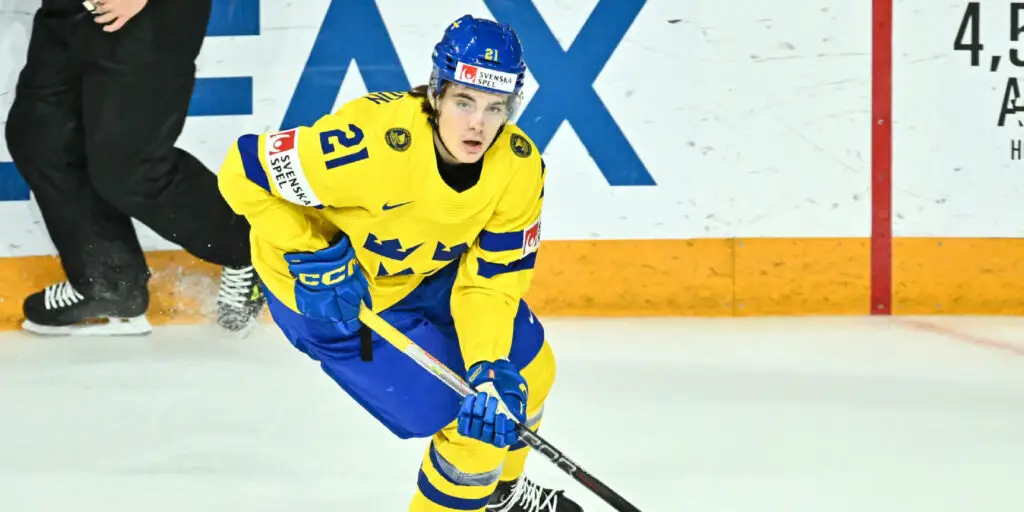
A Bright, But A Little More Distant Future
Some of the mistakes of the past continue to haunt this team. Ryan Kesler’s contract didn’t come off the books until the conclusion of this last season. John Gibson caused a stir earlier in the offseason after it got reported that he requested a trade and maybe said, “He would not play another game for the Ducks”, which Gibson and his agent would later deny. But Gibson’s bloated and lengthy contract makes it borderline impossible to move. Meanwhile, a lot of the current core was brought up and developed by the outgoing General Manager and the even more recently outgoing Coach. This should put a lot more questions in fans’ minds regarding the actual direction of this team. Judging by the response on Twitter following Troy Terry’s arbitration submission, it seems like we still haven’t quite figured it out yet. No one is untouchable.
Verbeek has a clear timeframe in mind for when this team will be competitive and is building it through his draft picks, and he isn’t married to anybody who was here before he got here. It’s going to be up to the individuals to sink or swim on their own. He has already done this with former Coach Dallas Eakins, and I wouldn’t be surprised to see it extended to the players as well. My prediction; Zegras and Drysdale will play another year on their QOs, and Terry will play 1-2 years on whatever the arbitrator decides, and their future will be determined by them and what they do next season. With Leo Carlsson and most of the up-and-coming prospects still being a few years away from breaking in and making an impact, it seems like Pat Verbeek is fine with letting the young current core earn their future with this team. While it’s already been turbulent off-season and is likely going to continue into a turbulent season, what will come out the other end will be a team of players that have been developed in a better environment and veterans that had to work to be here. This will make for a brighter future, even if it takes a little longer.
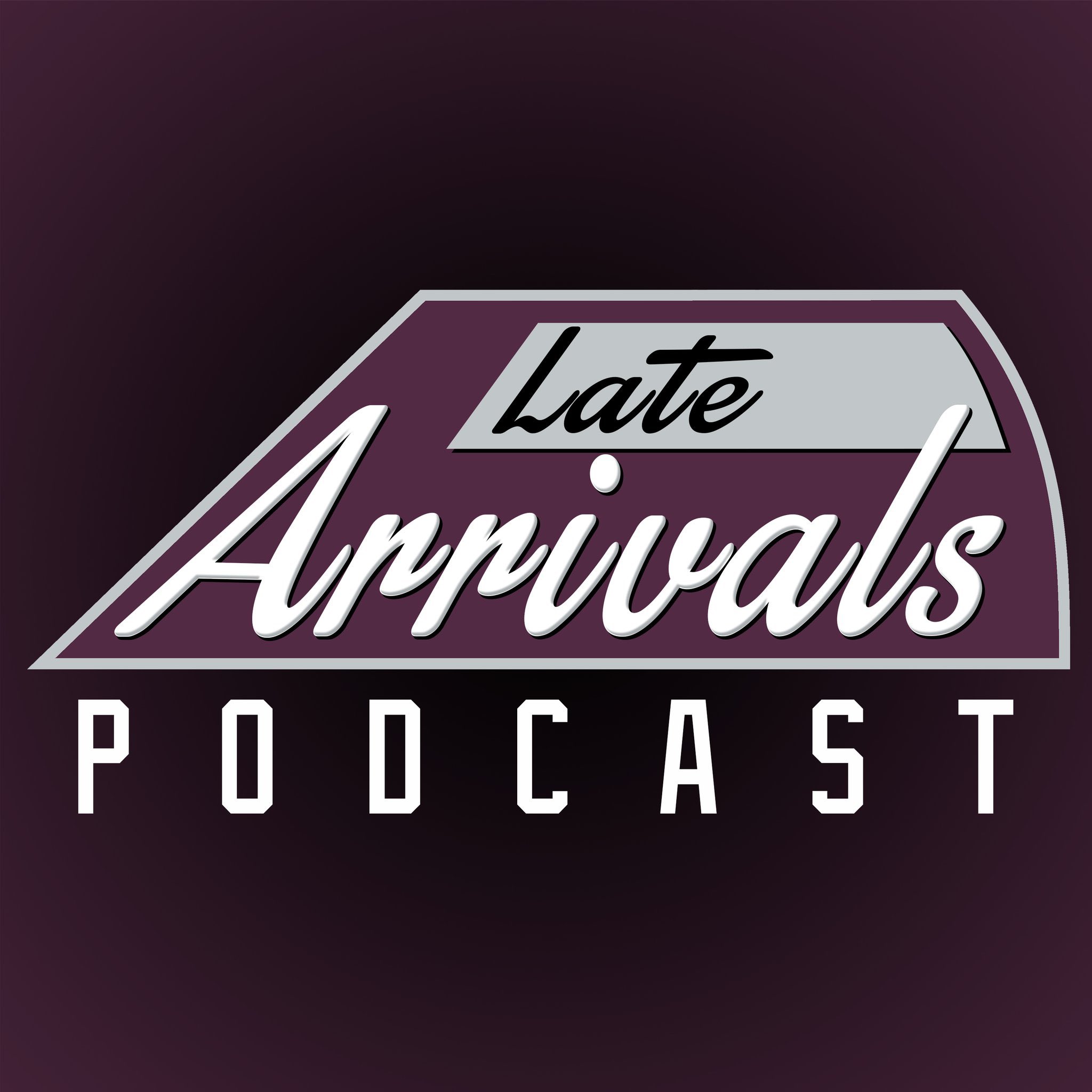
Episode 133: Mama, Im Quacking Home – Late Arrivals: An Anaheim Ducks Podcast
Discover more from Inside The Rink
Subscribe to get the latest posts sent to your email.

